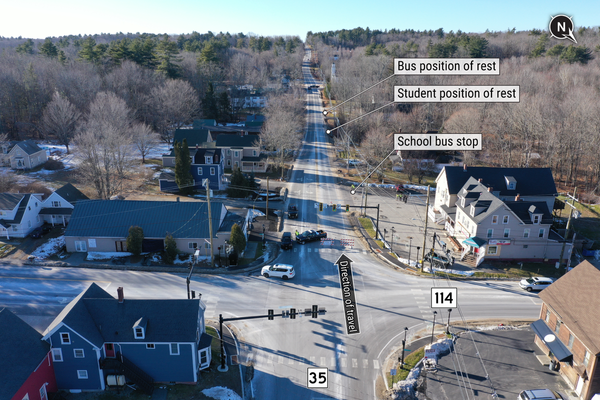
An estimated 68,440 people were unhoused in Chicago in 2021, with a sharp jump in the number of people staying on the street or in shelters, according to a report released Thursday by the Chicago Coalition for the Homeless.
The coalition’s analysis included data about people on the street or in shelters and the number of people who are “doubled up,” or temporarily staying with others.
Those who were staying on the street or in shelters increased nearly 50% to an estimated 24,011 in 2021, according to the report. A majority of people who were homelessness were people of color, with Black residents disproportionately represented, and Latino residents, families and youth more likely to be doubled up, the report found.
“The number continues to grow. It’s staggering. It just seems like a lack of due diligence on our city’s part to try to stifle the problem,” said Brian Rodgers, a reentry organizer and grassroots leader for Chicago Coalition for the Homeless.
The overall total of unhoused and doubled-up people reflects a 4% increase from 2020. The nonprofit estimated the number of people who were doubled up or temporarily staying with others represented the majority of unhoused, at 44,429.
The coalition’s report aims to capture the scale of homelessness in Chicago beyond a single, point-in-time count conducted each year. The federal Department of Housing and Urban Development mandates counts every other year, and defines a person experiencing homelessness as someone who “lacks a fixed, regular, and adequate nighttime residence.”
In 2021, a count of the city’s unhoused on a January night found about 4,477 residents needed shelter. But that same year 27,913 people accessed homeless services, such as emergency shelters or street outreach services, according to Homeless Management Information System data analyzed in the report. And the disparity between the two metrics is growing, with 36,878 residents accessing homeless services in 2022 compared to 3,875 people documented as homeless in that year’s point-in-time count.
“Even that disparity illustrates that a snapshot is a data point we may be relying on too much as a city to find policy solutions for homelessness,” said Sam Paler-Ponce, Chicago Coalition for the Homeless’s manager of research and outreach.
The point-in-time count “only counts people that are visible. It doesn’t include people that are doubling up, and it doesn’t include people that are away from street view,” Paler-Ponce said, later adding: “People can experience street and shelter homelessness and double up all within a week.”
The Chicago Coalition for the Homeless is among those calling for increasing a tax on the sale of high-end properties in order to create a dedicated revenue stream to fund homelessness prevention. Paler-Ponce said the tax increase can serve as a local solution that can operate outside of the U.S. Department of Housing and Urban Development’s restrictive definition of homelessness.
Mayor Brandon Johnson campaigned on enacting the real estate transfer tax increase, known as Bring Chicago Home. This week, his administration briefed alderpersons on a compromise marginal tax rate that would lower the rate by 20% for home sales under $1 million — the majority of sales — while increasing the rate to 2% for the portion of sales between $1-1.5 million and 3% for the portion of property valued at over $1.5 million. Ald. Carlos Ramirez-Rosa, of the 35th Ward, said alderpersons aim to introduce a resolution next month that, if passed, would put the question of increasing the tax before voters in March 2024.
Rodgers, with the Coalition for the Homeless, who has been homelessness himself, said funding can also support wraparound services and more permanent housing. People may reject overcrowded shelters that often have curfews, long waits and safety issues where “you’re constantly having to battle and look over your shoulder,” Rodgers said.
“You have tent cities, you have people that are reverting to sleeping on the subways, people that are reverting to sleeping in our downtown sections — wherever they can find a comfortable spot, that’s what they’re doing,” Rodgers said. “People choose to opt out, and they choose to go elsewhere. They choose to double up.”
The report notes that 2021 figures do not represent the more than 13,000 migrants who have arrived in the city since August of last year. The city’s January 2023 point-in-time count found 6,139 residents were unhoused, with asylum-seekers accounting for 42% of those staying in shelters.
The city’s shelters are maxed out. As of Thursday morning, 1,080 people were waiting in police station lobbies and at O’Hare and Midway Airports for a spot in a temporary shelter. Waits for rental assistance for migrants to move into permanent housing have been long.
Tessa Weinberg covers Chicago government and politics for WBEZ.







